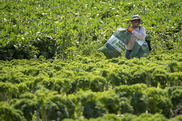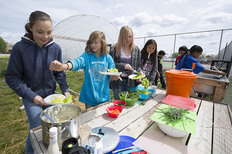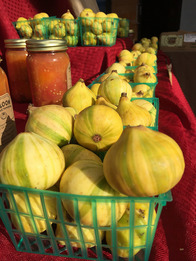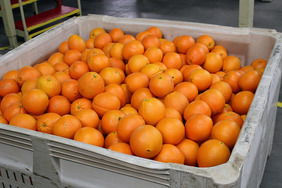Success Stories
According to the USDA,
about 12 percent of Americans face hunger, with 5 percent, or 6.1 million,
experiencing very low food security. Children are among the hungry with 703,000
ranked in the very low food security category. Food insecurity can increase the
risk of obesity, illness, and other maladies. Land-grant universities are
stepping in with projects designed to link people with nutritious and
affordable food. The Impacts and Success Stories in this special issue of
Fresh From the Field were prepared by the National Impacts Database
Communications Subcommittee. For additional information regarding these success
stories, as well as many more impacts, visit the Land-Grants Impacts Database.
 Virginia
Extension Aids Food Deserts
Food deserts are
often located in low-income areas where there are no grocery stores, farmers
markets, or other healthy food retailers. In Virginia, nearly 18 percent of the
population lives in a food desert. To help address the issue, Extension
educators trained residents—through workshops and field days—how to grow,
prepare, and market fresh produce by establishing community gardens. They also
worked with schools and churches to establish community gardens. Educators
anticipate a minimum 25 percent increase in fruit and vegetable production and
a 20 percent reduction in food costs. USDA photo by Lance Cheung.
|
 Food Security in California
California’s
Yolo County grows a wide and abundant variety of crops, but 16 percent of
adults and 23 percent of children struggle with food security. California
looked to the fields to solve the problem: produce left behind due to
overproduction or inconsistencies in size, shape, or color that kept produce out
of the marketplace. University of California, Davis spearheaded a collaborative
effort to test the process of gleaning crop waste, preserving it, and then
distributing it through local food banks in consumer-friendly packaging. They
tested the preserved produce with food bank recipients who participated in a
cooking contest. By creating recipes using the preserved foods, the local,
primarily Latina, women helped increase the acceptability of shelf-stable foods
during months when fresh produce is scarce. USDA photo.
|
News Coverage
 South Dakota Native American Children, Extension, and Master
Gardeners Garden Together
About 40 percent of South Dakotans eat
fruit less than once a day, and 26 percent eat vegetables less than once each
day. Rural residents have limited access to fresh produce, and South Dakota
Native American children have a higher than average risk for obesity and
diabetes. To address the issue, South Dakota Extension educators worked with master
gardeners, AmeriCorps members, and others to establish community gardens and
teach gardening classes. The gardens, seven of which were in Native American
communities, served as classrooms for nutrition and production practices. They
not only produced fresh, nutritious fruits and vegetables, but also provided
physical activity, a step toward reducing obesity and diabetes. USDA photo.
|
Library
 Maine Hunger Dialogues
In Maine, Extension helped to establish
the Maine Hunger Dialogues so students and others could learn about hunger on
local, national, and global levels and take action. Grants supported 11 teams that
developed food recovery networks, initiated food pantries and resource hubs, donated
fresh produce to food insecure students, and conducted food drives and hunger
awareness initiatives. The teams also produced 107,562 healthy, nonperishable
meals that were distributed to food-insecure students and community members. USDA photo.
|
Healthy School Farmers Market
Educators in Tulare County, California, where about 29
percent of children live in food-insecure households, established the Healthy
School Farmers Market in two schools where a high percentage of students
participate in free or reduced price meal programs. They, in collaboration with
a local food bank, school districts, and an after-school program, are providing
access to fresh fruits and vegetables, promoting physical activity, and
delivering key nutrition messages. Nearly 500 students and community residents
have participated and created local market opportunities for farmers. USDA photo by Lance Cheung.
|
|
 |
 |
|
4-H'ers Help Those in Need
In San Benito County, California, 4-H members
coordinated an effort to glean unpicked citrus fruit from local homes
throughout the city of Hollister and donate the harvested fruit to the local
food pantry. The program included an environmental scan of the community and
training of 4-H members and parents on how to properly use tools to safely
conduct the harvest. The effort provided 2,000 pounds of citrus to the pantry
for distribution to 9,000 customers. USDA photo by Richard Brassfield.
|
Tweet of the Week
#NIFAIMPACTS

|